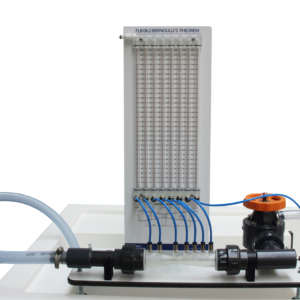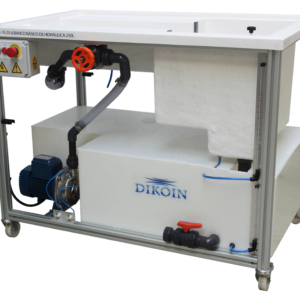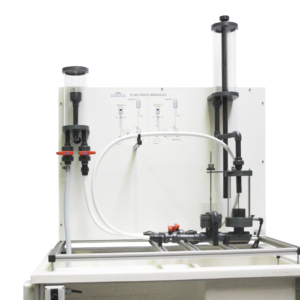FLB 06.2 – Bernoulli’s Theorem
This apparatus is based on Bernoulli`s principle, which describes the behaviour of a laminar flow moving throughout a conduit and considers that in an ideal situation, for a fluid (without viscosity nor friction) in a regime of circulation through a closed conduit, the energy remains constant throughout its route.
The equipment comes with a Venturi tube, implemented to carry out experiments for the demonstration of the theory based on the theorem of the conservation of mechanical energy.
The regulation valve allows to work with a variety of flow rates giving rise to different scales in differential pressure.
The pressure results are shown in the multi-tube manometers installed in the equipment. Therefore, the readings of pressure along the conduit can be obtained quite easily.
The measure of flow rates is carried out thanks to the volumetric tank in the hydraulic bench (required), which also enables the study of the relation between the pressure drop and the speed of the fluid.
- Demonstration of the equation of Bernoulli in a Venturi nozzle.
- Calculation of the losses in a Venturi nozzle.
- Study of the static, dynamic and total pressures.
- Study of the Venturi nozzle as a flow measurer and calculation of the unloading coefficient.
- Main pipe Ø = 25 mm.
- Min. diameter Ø10mm.
- Inlet angle 14º.
- Outlet angle 21º.
- a =25 mm
- b =20 mm
- c =10 mm
- d =14 mm
- e =18 mm
- f =20 mm
- g =25 mm
- 8 tube manometer, measurement range 300 mmWC.
- Hydraulic bench FL 01.4 ó FL 01.5 ó FL 01.6









